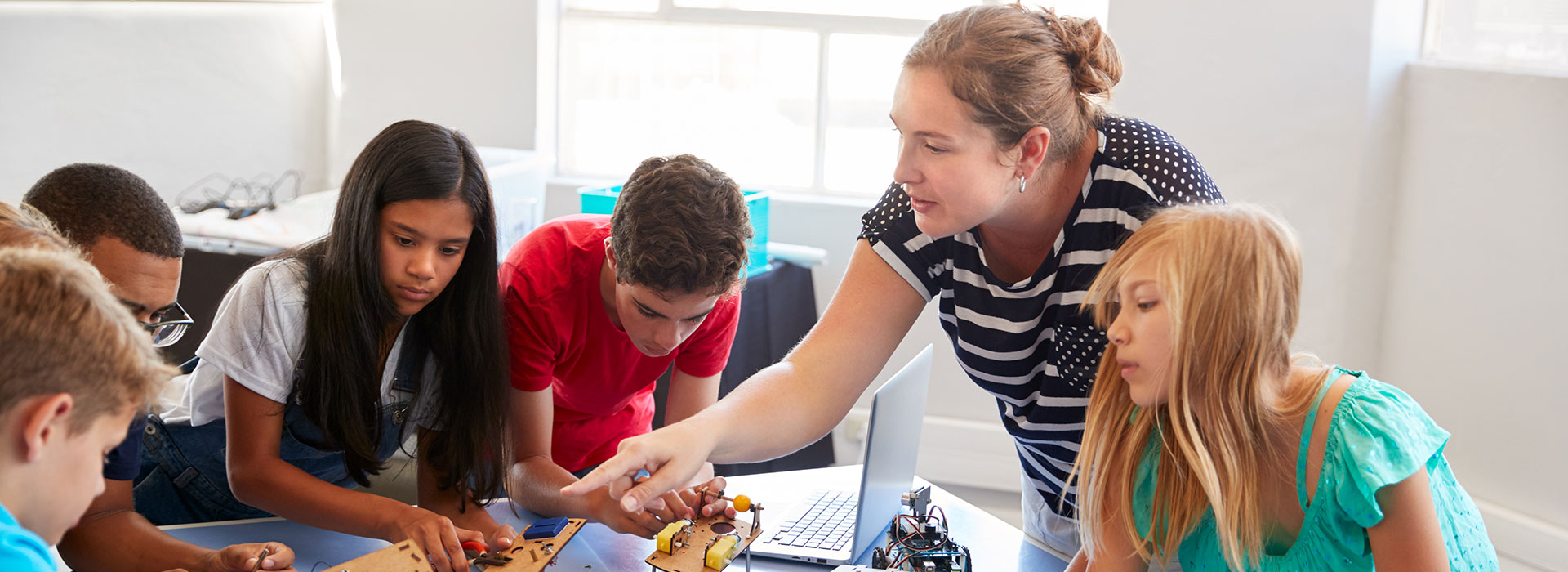The Importance of Experimentation
Earlier this school year, I was engaged in a conversation with one of my teachers. In the course of the conversation, she shared how appreciative she was that I was structuring divisional meetings the way I was asking teachers to structure their lessons. As she said, “You’re modeling how to do things the right way.” At this, I chuckled. If I have learned anything in my time as a school leader, it’s that there is no such thing as the “right” way.

For many of us, we think of divisional meetings as an exercise in passive learning. The divisional leader didactically delivers information that would have been more easily digested in an email. This is learning at its least effective and least engaging. The structure of our divisional meetings deviates from this more traditional approach. Our meetings involve station work, flexible grouping, learning menus, personal learning pathways, and plenty of opportunities for feedback and discussion. The thing is, deviating from the norm isn’t exactly the same as “getting it right.” But it is one aspect of “leading by example” leadership.
Once I stopped chuckling, I reminded this teacher that my modeling non-traditional instructional strategies isn’t what I’m doing right; and, she should know, considering the blistering email she sent me back in the spring.
When our divisional meetings were still virtual, I experimented with a novel meeting software called Gather.Town — a program that I was encouraging teachers to try with their concurrent remote learners. After the second of our divisional meetings using this software, this same teacher sent me the following email:
“Today’s Gather experience was another frustrating session. Once the sound issue was resolved, my video was lagging and I was unable to fully engage in discussions with colleagues. By the time 5:15 rolled around I was frazzled and frustrated. Will you please consider another tool to use for our next discussion?”
As we read this email, we both began to laugh. I reminded her that my intention has never been about getting it right; rather, it’s about modeling what I believe to be the most important thing of all: experimentation. Experimentation is the opposite of getting it right. Experimentation is the recognition of the imperfection that is inherent to our field, and the importance of seeking to tinker and iterate in the name of progress.
Now, more than ever before, we want our teachers to think of themselves as confident and capable experimenters and to lead by example. We want them to explore what isn’t working and exploit what is. We want our teachers to take risks based on what they’ve learned from these past 18 months, and apply these changes to improve their practice moving forward. Of course, experimentation isn’t always natural. It is a byproduct of a culture steeped in trust, psychological safety, and accountability, all of which stems from the example we, as divisional leaders, set.
Our actions and reactions signal to those around us what we, as divisional leaders, value. If we value our teachers experimenting in the name of continuous learning, we have to be sure that there is coherence between our thoughts, words, and actions. One place where we can model this coherence is divisional meetings.
How can you signal to your faculty the importance of experimentation and its significance in leading by example? Check out a few tips below:
Seeking and Sharing Feedback
A recent study out of The Wharton School of the University of Pennsylvania found that seeking and sharing feedback is positively correlated to creating an environment of psychological safety, with the most enduring improvements in psychological safety coming from those who shared and discussed their feedback with those who gave it. According to Google’s Project Aristotle, psychological safety is the most significant factor in optimizing team performance in a group setting. In other words, feedback can help us to improve our own practice, refine and iterate new initiatives, and most importantly, build a climate of psychological safety amongst our faculty.
One way that I am seeking and sharing feedback with my faculty is by using the program Slido. During divisional meetings, I use Slido to prompt the faculty to provide anonymous feedback around new initiatives. We then project and scroll through their feedback to discuss each comment. In real-time, we apply faculty feedback to update and improve these initiatives. By seeking, sharing, discussing, and applying feedback, I am modeling the iterative and recursive nature of experimentation. My hope is that they see the benefit of the exercise and my efforts to lead by example, and use the experience to springboard their own feedback loops.
Sharing Goals
At the end of the school year, I schedule a meeting with each faculty member to look back and plan ahead. Each meeting concludes with us co-constructing a goal for that individual to work towards the following year. The thing is, this process leaves me and the faculty in a state of disequilibrium. I know what their goals are, but they are not privy to my own. Why should it be that I get to inform their goals, but they do not get to inform mine?
This year, I shared my goals with the faculty at the start of the year, and used Slido as a way for them to anonymously and collectively provide feedback to help tweak and reshape them. As Todd Whitaker writes, “When the principal sneezes, the whole school catches a cold. This is neither good nor bad; it is just the truth. Our impact is significant; our focus becomes the school’s focus.” It’s crucial that the faculty knows what this focus is and is able to inform it. With the clarity that comes from sharing and discussing my goals, the faculty is able to track my own experimentation in pursuit of reaching them.
Learning menus
One of the simplest ways for us to model experimentation and lead by example is to personalize PD for our faculty. There’s no one-size-fits-all model when it comes to personalization, but one thing we can do is allow for people to move through material at their own pace.
I create learning menus in advance of divisional meetings, and pair these learning menus with physical workstations. As the faculty works through the material, they move around the room from one workstation to the next. By pairing learning menus and work stations, the learning becomes more flexible and more collaborative, lending the faculty more agency over how they spend their time. These learning menus also allow the faculty to revisit information on their own time, as opposed to having to cram the learning in during an hour-long meeting at the end of a busy school day. Learning menus are one way we can model experimentation by showing the faculty that it is okay to diverge from the norm.
Leading by example is not a matter of getting things right. Leading by example is a matter of us being the lead experimenter in the building. What can you do to create a culture of experimentation in your division?
Learn about Core Collaborative Leadership Coaching

